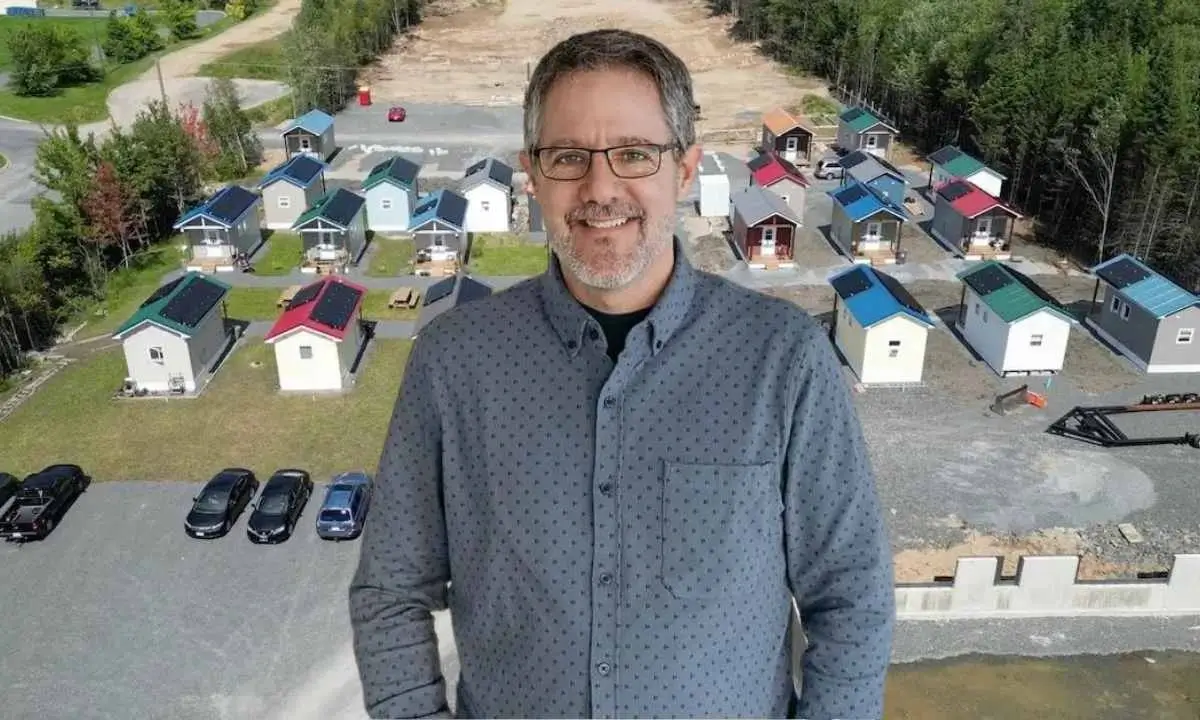This Canadian Millionaire Built 99 Tiny Homes To Help Homeless People!
Marcel LeBrun, a millionaire from Fredericton, New Brunswick, Canada. This Tech Entrepreneur launched an ambitious project to combat homelessness in his community. According to the CBC, Fredericton has nearly 1,800 people who found themselves homeless for at least a day. To Tackle the issue, the Canadian millionaire invested $4 million in developing the community project ’12 Neighbours.’ The project focused on building 99 small homes for homeless individuals. This initiative has drawn attention for its focus on community, sustainability, and creating lasting solutions. Let’s have a closer look at this intriguing story.
The Origins of the Project by Canadian Millionaire Built 99 Tiny Homes
LeBrun is a former executive at Salesforce and former CEO of Radian6. His success as a tech entrepreneur helped him here. LeBrun turned his attention to philanthropy after selling his company for a reported “eight-figure amount”. Motivated by the growing homelessness issue in Fredericton, he used his wealth to fund the creation of a gated community that would house people without stable shelter.
“I realized that there was more I could do with my resources, and this project was my way of contributing to a problem that affects us all.”
Marcel LeBrun
The project aimed to house homeless individuals in 99 tiny homes, offering a secure environment where residents could find stability. The 12 Neighbors community is located on the outskirts of Fredericton and operates as a gated complex to provide both safety and privacy for its residents. It has 24 hectares of land. According to LeBrun, building a single house takes about four business days. LeBrun explained that his team would first put together homes at a warehouse before loading them onto concrete blocks consisting of the building’s foundations.
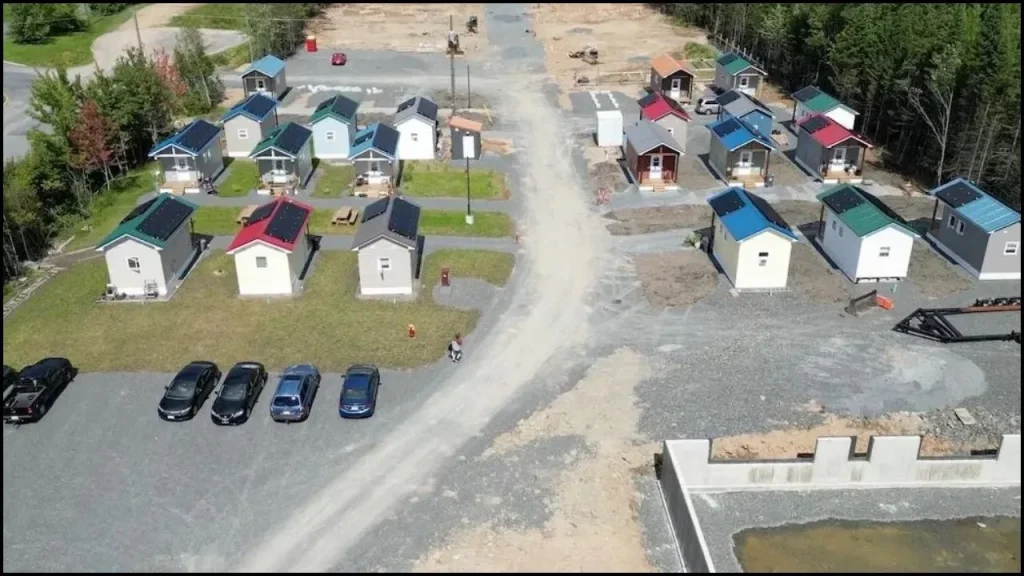
What the Tiny Homes Consist Of
Each of the 99 tiny homes measures approximately 300 square feet and functionality of the house takes priority. They include a bedroom, a small kitchen, and a bathroom. These homes are fully furnished with necessities, ensuring that new residents have all they need to begin rebuilding their lives. “The goal was to make these homes comfortable and functional,” LeBrun said in a statement.
The design of the homes prioritizes sustainability. Built using eco-friendly materials, the homes are equipped with solar panels for electricity, rainwater harvesting systems, and energy-efficient appliances. LeBrun explained to Green Matters, “We wanted these homes to be environmentally friendly and cost-effective in the long run. Sustainability is a key part of this project.”
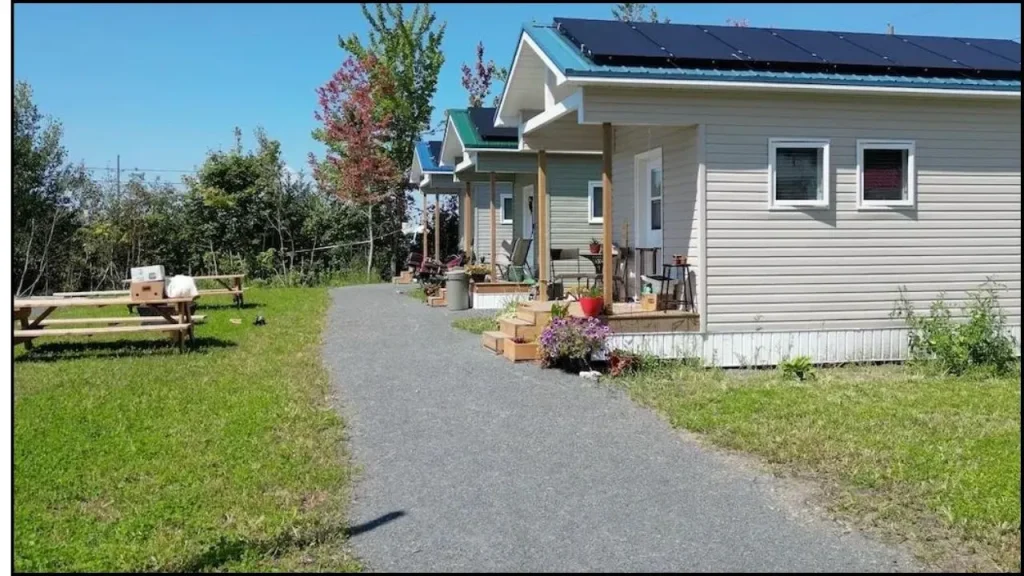
Addressing the Problem of Homelessness
LeBrun’s project does not simply stop at providing housing. He recognizes that many of the individuals who will live in these homes face deeper challenges, such as unemployment, mental health issues, and addiction. To address these needs, the community offers access to various support services, including mental health counseling, job training, and addiction recovery programs.
“We’re not just providing homes; we’re providing a pathway to recovery and reintegration into society.”
LeBrun said in an interview.
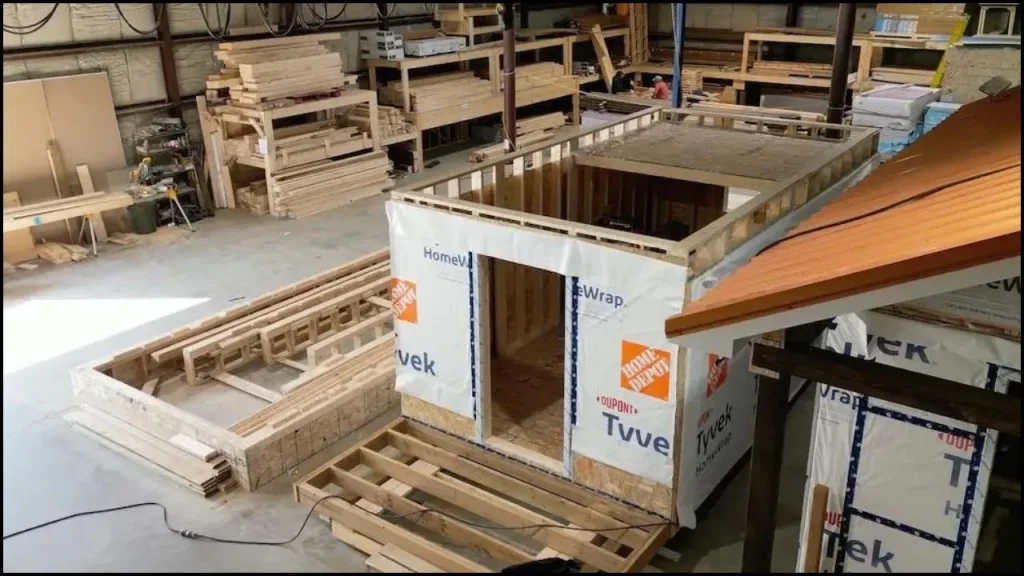
In Canada, Lebrun says, a single individual receiving social assistance gets $636 per month; meaning their rent would be about $200 per month. This covers rent, all utilities, and internet and about 30% of their assistance. This initiative offers more than just financial support; it helps residents develop a sense of purpose and responsibility. As LeBrun says, “It’s crucial that people don’t feel like this is a handout. We want them to be part of something and contribute to their community.”
“It’s crucial that people don’t feel like this is a handout. We want them to be part of something and contribute to their community.”
Marcel LeBrun
LeBrun has worked closely with local organizations to ensure that residents receive the necessary support to regain control of their lives. Partnerships with healthcare providers, social workers, and job placement agencies ensure that residents can access the resources they need.
“The collaboration between different sectors is vital. We can’t solve homelessness alone; it requires a community-wide effort.”
LeBrun noted
Aside from the houses, there are plans for a community center and coffee shop, which residents will run. He also has a ‘teaching kitchen’ and a silk printing business for people to work in as well.
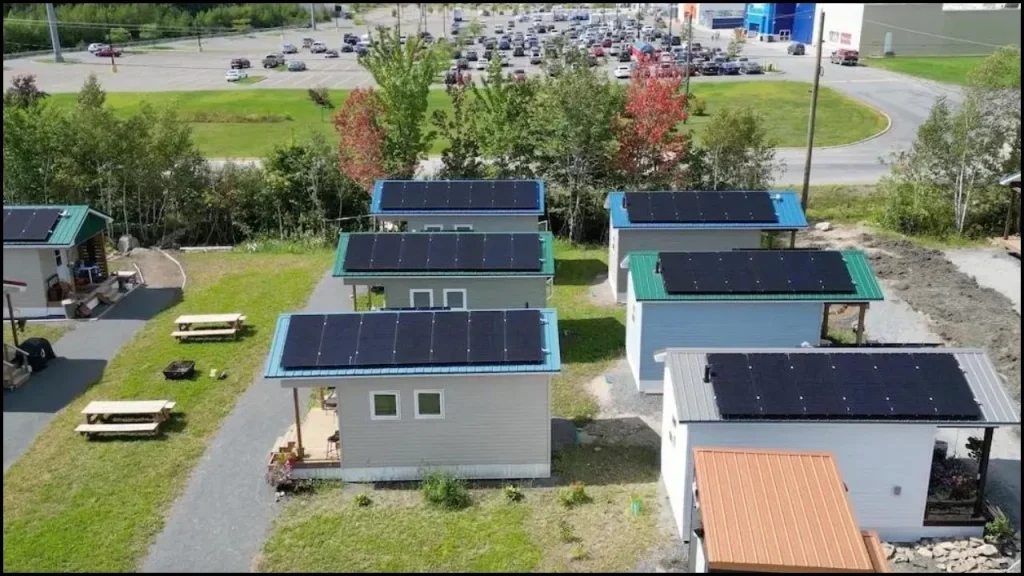
This has given new life to the residents. For example, Samantha Seymour is a drug addict and a homeless person who came to 12 Neighbours from a shelter. She recently started learning a new trade: silk screening. She’s the print lead for the 12 Neighbours print shop, where she silk screens tote bags and T-shirts by hand.
“I have a great support system around me, and I’m doing the work necessary every day to stay there.”
Samantha Seymour
Overcoming Obstacles by Canadian Millionaire Built 99 Tiny Homes
While the project has been successful, it has also faced challenges. One of the primary obstacles was securing land for the development. After much searching, LeBrun was able to purchase a large plot outside the city limits, allowing for the creation of a self-sustaining community. “Finding the right location took time,” LeBrun admitted. “We wanted a place where people would feel safe, but also where we could build a long-term solution.” There were issues with some former residents with drug addicts and various unsavory characters squatting with them. These troublemakers were evicted.
There was also initial skepticism from some local residents who feared that a large-scale homeless community might cause issues. However, as the project developed, many of these concerns were addressed through community engagement and education.
“We held meetings with local residents to explain the project and to hear their concerns. We want this to be a community everyone can be proud of.”
LeBrun said.
Another challenge has been finding sustainable funding. Although LeBrun initially invested about four million dollars into the project, the growing size of the initiative required additional support. Local businesses, charities, and volunteers have since stepped in to contribute, offering financial assistance and in-kind donations. He was also fortunate to receive a government grant of twelve million dollars. This collaboration has been essential to keeping the project going.
Gated Community Concept or Decentralized Units
Each tiny home is arranged in clusters within the community, allowing for small, neighborly interactions without overcrowding. Shared community spaces include a park, recreational facilities, and a central building where support services are offered. “The design of the community was very intentional,” LeBrun explained. “We wanted to create a place where people could feel part of something bigger, while also having their own space to recover and grow.”
However, not everyone is convinced that this is the best approach to tackling homelessness. Warren Maddox is the executive director of Fredericton Homeless Shelters and said he spoke to LeBrun at the outset. “My advice to him was stop at 50 [homes] and take a breath,” Maddox said.”It’s a huge concentration [of people]. You’ve got people that have paranoia, or that have come through some massive trauma, where they need to be sort of away from that population.”
“It’s a huge concentration [of people]. You’ve got people that have paranoia, or that have come through some massive trauma, where they need to be sort of away from that population.”
Warren Maddox
Maddox said his preference is a more decentralized approach, where units are scattered around the city so one avoids a large concentration of people living nearby. Also, he said it is conveniently located near groceries, amenities, and bus routes.
However, LeBrun disagrees. He says his method builds up affordable housing faster.
The Broader Impact of Canadian Millionaire Built 99 Tiny Homes
LeBrun’s project has gained national recognition, sparking interest from other municipalities and social organizations. Several Canadian cities have reached out to explore the possibility of replicating the tiny home model. In addition to providing shelter, LeBrun’s initiative is seen as a potential long-term solution for cities struggling to manage homelessness in a way that offers dignity and support to those in need.
LeBrun’s initiative has also inspired discussions on how wealthy individuals can play a role in addressing social issues. LeBrun emphasized the importance of philanthropy: “I believe that if you have the means, you should use your resources to make a positive impact. This is one way I can give back to the community that supported me throughout my career.”
Although the project has been successful so far, LeBrun remains cautious about scaling up too quickly. He notes that careful planning and long-term sustainability are essential to ensure that the community can thrive for years to come. “We’re focused on making sure this works here before expanding too fast,” LeBrun stated. “It’s about quality, not just quantity.”
It is noteworthy, however, that while there are similar housing projects aimed at homelessness inspired by 12 Neighbors, they were met with mixed results. For example in San Jose, California, streets are getting tiny homes made out of repurposed shipping containers. These containers usually cost around $150,000 per unit for a 100-home project. It was planned by the city mayor to battle California’s chronic housing shortage. But critics say it might not dent homelessness.
Conclusion
Marcel LeBrun’s vision for addressing homelessness through the construction of 99 tiny homes has created a significant impact in Fredericton. His focus on sustainability, community building, and long-term support has provided a model that could be replicated in other parts of Canada and beyond. The combination of affordable housing, a gated community for safety, and access to essential services has created a holistic approach to solving the complex issue of homelessness. Through his efforts, LeBrun has shown that it is possible to tackle this pressing social issue with innovative and compassionate solutions, providing hope for a future where more individuals can regain control of their lives.
Also Read
Logan Paul Responds to DanTDM’s Tweet and the Growing Backlash Against Lunchly

